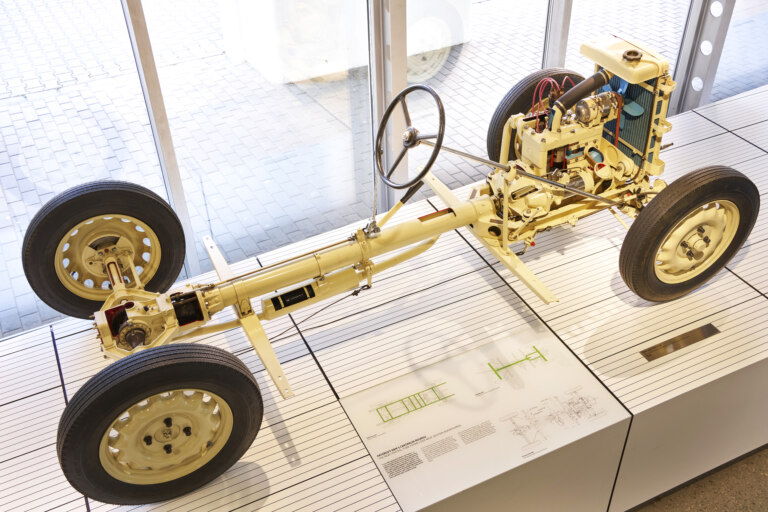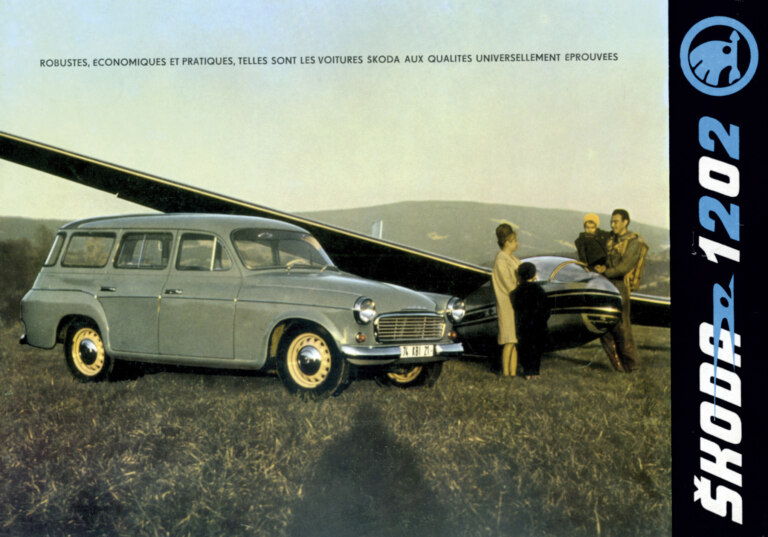90th anniversary of the Škoda product family with steel backbone

- April 1933 saw the debut of the Škoda 420, an affordable model with a progressive concept
- A very light and rigid chassis frame with independent wheel suspension further increased the ride comfort and durability of Škoda cars
- The continuously innovated concept has proven itself in a wide range of Škoda passenger, light commercial, and off-road models
- The successful career ended with the Škoda 1202 (1961-1973), but derivatives of the Turkish Š 1202 Kamyonet pick-ups were built until 1980
Mladá Boleslav/Kortenberg, 11 April 2023 – 90 years ago, in April 1933, Škoda came up with the perfect answer to the world economic crisis - the progressive people's car 420. For the first time, it used a concept with a backbone chassis frame and independent wheel suspension, which was ahead of its time and remained competitive for almost half a century thanks to continuous innovations. The lightweight and rigid "steel backbone" of the modular construction has proven itself in two- to eight-cylinder Škoda cars with 4×2, 4×4 and 6×4 drive. These included the legendary Popular, Rapid, Superb, Octavia and Felicia models. Until 1980, proven Czech chassis were used for the production of Turkish Škoda 1202 Kamyonet pick-ups.
A trump against the crisis
Škoda's journey to the position of the largest Czech car manufacturer and exporter, which it has been from 1936 to the present day, began as early as April 1929. The successful brand with a tradition since 1895 started efficient belt production in a modern factory in Mladá Boleslav. Initially, models of the classic concept with a ribbed chassis frame and rigid axles rolled off the line; from the spring of 1930, the four-meter-long Skoda 422, whose complete chassis weighed around 730 kg, formed the basis of the range.
A year later, after an eight-year working stay abroad, the experienced designer Ing. Josef Zubatý returned to Czechoslovakia. From the summer of 1932 he worked in the Prague office of Škoda on a completely new concept of cars with a longitudinal spine chassis frame.
Originally, it was a beam of rectangular cross-section. At the front, the frame was forked to accommodate the engine flexibly. The rear-driven semi-axles were highly resistant to the stresses of gravitational forces, eliminating the weakness of some contemporary competitors. At the front, a rigid axle was used. First prototype went into service in September 1932, and production of Škoda 420s reached customers in April 1933. It was then that the world economic crisis reached its bottom in Czechoslovakia.
The foundation of the extended family
The ingenious backbone frame concept brought several significant benefits to customers. The 420 weighed about 200 kg less than its conventional predecessor, the Škoda 422, including bodywork only about 730 kg. A more durable chassis did reduce stresses on the bodywork. The independently suspended rear wheels followed the road surface better than the rigid axle, thus increasing the driving comfort noticeably. In April 1934 sales of the successor, the legendary Škoda Popular, started. The rectangular beam finally gave way to a tubular spine protecting the drive shaft. All four wheels already have independent suspension. The "steel backbone" was inherently very variable, and so during the 1930s alone, it was used in various designs on cars ranging in wheelbase from the 2.30m of the first Popular to the 3.40m of the eight-cylinder Superb 4000, not to mention the military special Škoda 903 with a 6×4 drive configuration and a wheelbase of 2470+920mm.
The progressive concept of the chassis has proven itself even in the most demanding operating conditions, including the journey of the Škoda Rapid car around the world (1936) and racing specials. From 1952, these chassis carried the new all-metal Škoda 1200 Sedan body, and seven years later the legendary Škoda Octavia and Felicia models began their careers. The last Czech representative of this successful extended family was the Škoda 1202 (1961-1973). But the modified chassis of the Octavia Super and 1202 also became the basis for several localized products, be it the New Zealand Trekka (1966-1972), the Pakistani Skopak (1970-1971), or the Turkish Škoda 1202 Kamyonet pick-up (1971-1980). Since 1964, Škoda's large-scale production has been dominated by self-supporting bodies without a backbone chassis.



